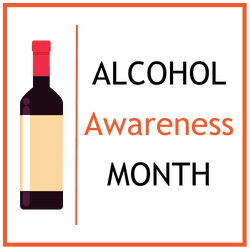
LGBTQIA+ At Risk: Improving Healthcare and Health Outcomes
June is Pride Month, an opportunity to celebrate and recognize the impact of the lesbian, gay, bisexual, transgender and queer individuals in our communities. However, the LGBTQIA+ community continues to have many struggles, including receiving good healthcare, largely due to past experiences or fear of discrimination of providers.
National Institute on Minority Health and Health Disparities (NIMHD) reports that stigmatization, hate-violence, and discrimination are still major barriers to the health and well-being of LGBTQIA+ individuals.
Additional challenges for LGBTQIA+ individuals include a higher risk of certain conditions, less access to health care and worse health outcomes. These are partially due to a lack of data, lack of knowledge from healthcare providers for these patients and issues related to social determinants of health. According to the National LGBT Cancer Network a cluster of lifestyle factors including drinking alcohol, smoking, being an unhealthy weight, HIV and HPV infections, and not going in for screenings are all risk factors found to increase cancer incidence and late-stage diagnosis in this population.

Here are a few additional facts:
- 1 million. The number of LGBTQ+ cancer survivors in the country today (National LGBT Cancer Network, 2020)
- 7 types of cancer disproportionately impact LGBTQ+ people, including anal cancer, breast cancer, cervical cancer, colorectal cancer, lung cancer, prostate cancer, and uterine cancer (Cancer.net)
- Transgender individuals are significantly less likely to be screened for breast and colorectal cancer compared with cisgender individuals (AACR, 2021)
The American Cancer Society estimates approximately 152,000 new cancer cases and
more than 48,785 cancer deaths among the LGBTQ+ people this year.

LGBTIQIA+ Community Resources
Part of Bag It Cancer’s mission is to provide respected resources to everyone concerned about their health or facing a cancer diagnosis. Here are a few of the sources we list on our Populations Groups page in our Cancer Resource Center. These organizations are on the forefront of advocating for and making improvements to healthcare for the entire LGBTIQIA+ community.
- LGBTQ-friendly health care professional databases
- Support for LGBTQ+ Cancer Survivors
- Gov: Transgender Healthcare—Details to consider in the Health Insurance Marketplace.
- National Center for Transgender Equality—Social justice organization devoted to ending discrimination and violence against transgender people. Resources on a range of issues and rights.
- National Coalition for LGBT Health—Works to improve the health and well-being of the LGBT community through federal and local advocacy, education, training, and research.
- National LGBT Cancer Network—Works to improve the lives of LGBT cancer survivors and those at risk through education, training, and advocacy. Includes a directory for LGBT-friendly providers.
- Queering Cancer—Resources, research, stories and support
- SAGE: Advocacy and Services for LGBT Elders—Works to improve the lives of LGBT cancer survivors and those at risk through education, training, and advocacy.
- The LGBT Cancer Project—Raises awareness and diminishes the threat of cancer in the LGBT community through research, education, survivor support and advocacy.
- Transgender Cancer Patient Project—Community, support groups, trusted resources, events, projects, and zines (self-published books).

















Recent Comments